#shijo mae
Text
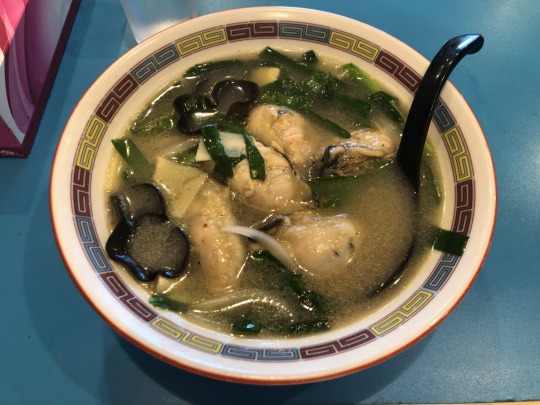
やじ満(Yajima)「カキらーめん」
✔️Store name / Menu
✔️Nearest : 市場前駅
#ラーメン#ramen#牡蠣ラーメン#牡蠣そば#牡蠣#かき#oysters#oyster noodle#oyster#市場前#豊洲市場#toyosu#shijo mae#shijomae#toyosu market#ラーメンジャケ買い#noodles#food#japanese#tokyo
19 notes
·
View notes
Text
Girls talk - rerulili feat. Hatsune Miku, Kagamine Rin, Megurine Luka, GUMI
Original Romaji:
Kinou no dorama sukoshi namida me;;
konbini zen sa meate tachiyomi
arie nai! toku mo no kaban no naka
kontorekkusu hyaku hachi juu en!
obentou tamago to winnaa torikae
shuumatsu mada mada tooi yume no kuni
houkago hen gao chame toriai
yabaku nai? ato de LINE okutte
Teiu ka mousugu tesuto jan
maji de!?
sekai shi toka maji ki mo kunai?
papuanyuu ginia no 'papua' tte nani?
nanka sugoi puni puni shite sou ?
wakaru ?!
nee nee kiita?
ni kumi no karette kikoku shijo desho, yabaku naai?
tokoro de europe america no doko ni aru no?
Nee shitte ta?
kudaranai nichijou no naka yume miru koi no ichidaiji
nee sukoshi ira?? toshite mo yurushite ne
datte sore ga onnanoko da mon
Tannin suruu sukiru zenkai
kanji wa igaito yomeru no yo
sumaho ja tokenai houteishiki
zenin, hachikou mae shuugou!
Anta no kareshi sokubaku shisugi ?
tsuka yaba ku nai?
maji chou yabaai
demo bosei honnou e gurarerutte iuka
atashi no jaga riko tabeta?
raigetsu joshi kai doko iku?
yakiniku! shabushabu! onsen! okane nai!
chotto juuden ki kashite
yabba ? i kyou baito datta ?!
Nee mite ta?
ki ni naru shisen sagashite koi ni koisuru o toshigoro
nee sukoshi uza garami datte waratte ne
taai nai koto ga shiawase na no
Nee shitte ta?
kudaranai nichijou no naka araburu koi wa tomara nai
nee sukoshi ira?? toshite mo gaman shite
datte sore ga onnanoko da mon
Tari nai no wa kitto joshi ryoku janai
ichi ho fumidasu yuuki da yo
kira kira shiteru hontou mo uso demo
kashimashii kono hibi wa tsuzuite ku
English Translation:
Yesterday's drama got me a little teary-eyed;;
and in the convenience store, I strolled through with some money on hand,
and I couldn't believe my eyes! In one aisle, I found a cutout tote bag,
with a Contrex bottle, only 180 Yen!
So in my bento, I substituted eggs with sausage...
I still dream of a weekend in a distant country…
After school, we copied each others funny faces,
is that so bad? I'll send a LINE to you later.
I think we have a test coming up soon.
Seriously!?
Have you been studying your world history really hard?
In Papua Guinea, what does "Papua" mean?
This thing over here is really squishy and cool!
Check it out-!
Hey hey, have you heard?
He replied me back in only two texts, is that bad?
By the way, where can I get goods from Europe or America?
Hey, did you know?
Even in this quirky life of mine, I still love to dream big.
Hey, can't I be forgiven☆ even a little bit,
because after all, I'm still just a girl.
I'll improve my skills in homeroom,
because kanji still confuse me to no end.
My smartphone can't solve this equation…
Now, everyone in front of Hachiko!
Your boyfriend is too invasive-
Can you just stay out of it?
But he's really awful!
It's just my maternal instinct setting in…
Can we get someplace to eat?
Where shall we host our women's meeting next month?
Yakiniku! Sizzling! Hot Springs! So much money~!
I need to charge this a bit more…
Come on, I used up all my data for today-!
Hey, are you seeing this?
Everywhere I look, people my age are falling head over heels in love.
Hey, just laugh a little please.
So I'm not just a klutz, I'll try to be a little happier.
Hey, did you know?
Even though my everyday is silly, I won't stop this turbulent love.
Hey, just up with me☆ a little longer…
Because I'm still just a girl.
It's still not enough, I'm not a full woman yet.
I'll need a bit more courage to take that leap.
The sparkling truth is that I can lie,
but also that I'll keeping moving on with my life.
Have a nice day-
See you again-
3 notes
·
View notes
Text
JAPAN 2018: Day 3 – Torii Gates, Bamboo Groves, and Cherry Blossoms in Kyoto

After at least an hour ride going to Fushimi-Inari station, we were greeted by dozens of people, both Japanese and foreigners, heading in the same direction to one of the most popular sightseeing spots in Kyoto.

Fushimi Inari-Taisha Shrine, an important Shinto shrine in southern Kyoto, is known for its mesmerizing thousands of unending pathway of torii gates up to the mountain. It was first built as early as the 8th century by the Hata family to worship the gods of rice and sake. Along the pathway through the gates, you will also see plenty of stone foxes, usually come in pairs, which is considered to be the messenger of Inari – the god of rice and business.
A row of souvenir shops and Japanese street food stalls lined up before reaching the main tower of the shrine. The smell and the way the vendors cook the food were inviting but, we opted to go straight ahead the shrine, passing through the Romon Gate at the entrance.

There was a sudden explosion of color orange everywhere and small worship places around the area however, my eyes wandered to where the torii gates are. We passed by the main shrine and walked towards Senbon Torii which literally means “thousands of torii gates.” Tourists flock here and there which makes it difficult to have your picture taken without anyone else photobombing your photo. But, worry no more, because as soon as you climb further the inner part of the orange maze, there were secluded areas with fewer tourists to the point that you can have your own photoshoot with the torii gates.

There was a time when we wasted at least 30 minutes because we’re waiting for the coast to clear so we can achieve an Instagram-worthy photo not knowing that torii gates were really endless and you can take pictures as much as you want until the end of the trail.

We walked through the entire tunnel which comprises of slopes and staircases leading up to Mount Inari. (Tip: Wear your MOST comfortable shoes.) Along the way, you will see multiple small shrines and altars and some actually lit candles and burn incense. There are numbers of stores, vending machines, and restaurants around where you can buy food and water if you found yourself needing a rest.

After an hour of trekking, there is the Yotsutsuji Intersection where you can have a good view of the city.

We’ve taken a break more than a few times and asked myself “di pa ba matatapos ‘to?” because really, it’s a loooong walk going up. My feet and entire legs were screaming as if they want to collapse any minute. It will take at least 2 hours, depending on your pace, to reach the top of the mountain, which is 233m high.

On our way back to the station to head to Arashiyama Bamboo Forest, we feed ourselves with some takoyaki for 500 yen.
Kyoto is not as small as Nara where attractions need only a small amount of walking. All the major tourist spots are spread out in different directions so we had to take another one-hour train ride to go to Arashiyama to visit one of the absolute highlights of Kyoto.
From the station, we crossed Nakanoshima Park and Togetsu-kyo Bridge where cherry blossoms are abundant. I let my eyes drift for a while and let my heart fall in love with the place – it is very dreamy and enchanting. The scenery is like a postcard turn into reality. A view waiting to be captured and be a wallpaper. A painting that comes to life.

We took our time getting to Arashiyama Bamboo Forest, meandering down the bridge, passing through number of tourists walking and riding Jinrikisha, a man-pulled rickshaw (it’s like a “kalesa” in the Philippines).
A vast number of bamboo stalks greeted us and I watched as people stream in and out of the forest. Walking between the bamboos felt fascinating and peaceful. I felt as though I have walked into some other world, somewhat magical. The breeze is atmospheric, caressing our skin and making these tall bamboo groves sway to its rhythm. Amazing how light penetrates through the canopy and how these bamboo stalks seem to continue to grow endlessly up towards the heaven.

The entire path is 500 meters long and you can walk through it in 15 minutes, depending on your pace and on how long you take your Instagram pictures. It can get crowded especially at noon but, there were secluded areas where you can take your photos.


Leaving the bamboo grove, we walked back and stopped by an ice cream store. We devoured a mixed matcha and cherry blossom flavored soft ice cream for 300 yen, not minding the fact that the weather is at 16 degree Celsius *cue music: “the cold never bothered me anyway”*, and rest our feet for a while.

Going back, we dropped by at Tenryuji Temple, the largest temple in Arshiyama district and continued towards the quiet neighborhood full of traditional Japanese houses and more temples. This part of Arashiyama is less touristy and more rural.

By 4 PM, we decided to go back to Nakanoshima Park and soaked in the picturesque view of cherry blossoms along Katsura River and Togetsu-kyo Bridge, also called the “Moon Crossing Bridge” and the most iconic landmark in Arashiyama district. We strolled in silence and settled ourselves in one of the benches in the park, admiring the beauty of nature while watching the boats float in the river.

I took a deep breath of the fresh, crisp air, enjoying the scenic view of the river and the postcard-perfect look of cherry blossoms. Spring in Arashiyama is color pink with dozens of cherry blossoms adjacent to the bridge, clear blue skies, and perfect cold weather. It is great sunsets with colorful mountainside in the background.


We couldn’t get enough of the beautiful view of the flowers but, we have to go back to Osaka before the night gets too late. We run down the street going back to Hankyu Arashiyama Station. A warm-colored lantern-shaped lighting surrounds the station and gives me the atmosphere of an ancient capital – it’s lovely and romantic! This is definitely the most alluring station I’ve seen around Japan.

How to go to Kyoto from Osaka:
Go to the nearest station from your hotel. From Hotel Zipang, the nearest is Dobutsuen-Mae Station.
Ride Tanimachi Line going to Temmabashi Station.
From the station, transfer to Keihan Main Line going to Fushimi-Inari Station.
From there, you can walk going to Fushimi Inari-Taisha Shrine.
How to go to Arashiyama Bamboo Forest from Fushimi-Inari Station:
From Fushimi-Inari Station, ride the train going to Gion-Shijo Station.
Transfer to Hankyu Kyoto Line going to Arashiyama Station.
From there, walk through Nakanoshima Park and Togetsu-kyo Bridge going to Arashiyama Bamboo Forest.
#travel#japan#kyoto#fushimi inari-taisha shrine#fushimi inari#bamboo grove#arashiyama bamboo forest#nakanoshima park
10 notes
·
View notes
Text

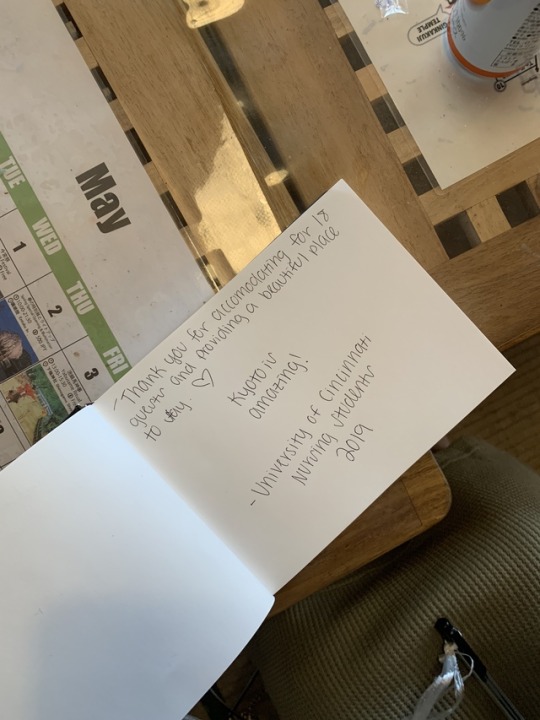
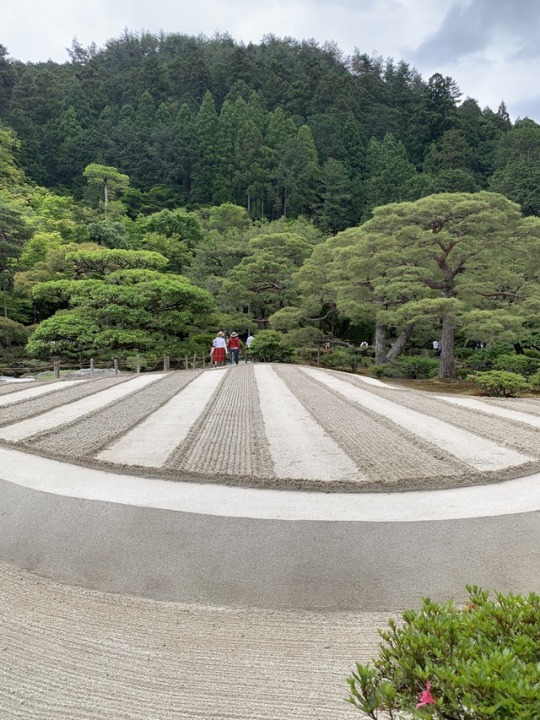
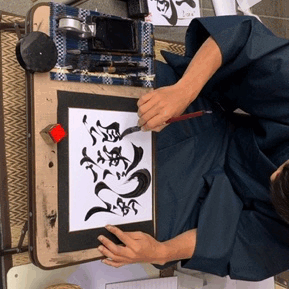
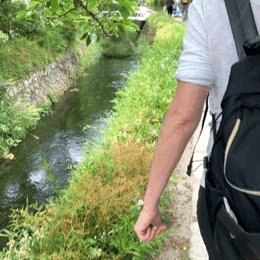


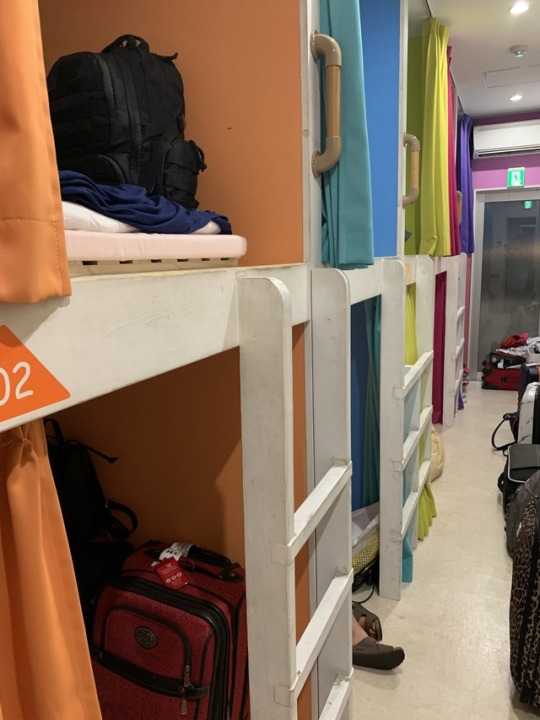
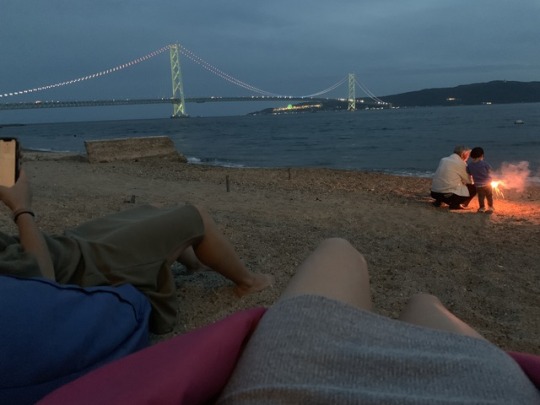
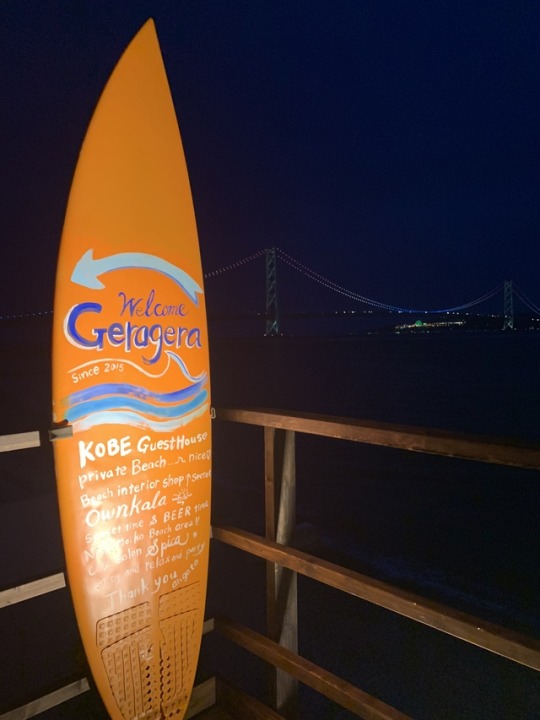
Day 10: Sunday, May 19th, 2019
* Breakfast at Khaosan Kyoto Guest House
* Kawaramachi to Karasuma
* Shijo Station to Kyoto Station
* Bus 110 to Ginkakuji- Mae
* Ginkakuji Temple
* Shopping at Ginkakuji
* Walk The Path of Philosophy
* Nanzenji Temple
* Keage Station to Karasuma Oike
* Karasuma line to Kyoto station
* Kyoto Station
* Shinkansen to Shin Kobe Station
* Seishin chuo line to Shin-Nagata
* JR to Asagiri
* Gera Gera Guest House
0 notes
Text
Toyosu market is the new Tsukiji… sort of, anyway.
Tokyo’s famous Tsukiji fish market closed in October 2018 and was relocated to Toyosu – a man made island south-east of the old site – to free up development space ahead of the 2020 Olympics. Lots of controversy surrounded the move – not least because it was discovered that, as well as being over budget and over programme, the new site was heavily polluted with things like benzine, cyanide and arsenic… (For those interested in more details, check out: https://www.eater.com/2017/7/25/16019906/tokyo-tsukiji-toyosu-olympics-delay). However, against the odds, the new facility opened on 11th October 2018 and replaced the old market, which had always been a popular spot for tourists wanting to view the early morning tuna auctions. Tuna of up to nearly 500kg can be sold for hundreds of thousands of pounds, the record being USD1.76 million!!! That’s a lot of sashimi.
A representation of one of the largest tuna to have been caught in Japanese waters and sold at Tsukiji market in 1986. 2.88m in length and 496kg!!
Tsukiji was hectic and bustling: forklift trucks sped around the narrow alleyways, the drivers shouting (with various degrees of politeness) to get out of the way, vendors selling their wares (you could buy direct from the stalls); you took your life in your hands as you wandered between the stalls and checked out the fish. When it was all over, you could walk a couple of hundred meters to the outer market and have sushi for breakfast among the discarded polystyrene ice packing boxes and general fish-related paraphernalia.
Toyosu is kind of the same… yet totally different. The timings are the same and you need to get there EARLY – I got the first metro at just after 5am, which got me to Toyosu around 5.45am (including the time it took me to walk when I got off at the wrong station… Note: Use Shijo-Mae station, not Toyosu…). It was already busy, so I headed straight to the auction area. You can still see the auctions, but you’re kept away from the heart of the action in an observation area on the first floor. You need to get a visitor pass (issued on a first-come, first-served basis, then it’s ‘one in, one out’, so you may have a short wait if you just miss out on one). There’s a new ground-floor viewing area opening on 15th January 2019, but for now, you’re limited to looking down on the action. Some people have been a bit derisive of the ‘lack of authenticity’ of the new facility, but the bonus of it is that you get a great view of the tuna all laid out on the floor, and you get to see the large scale hustle and bustle – there is literally always something going on to watch (also, it’s important to remember that this is a live fish auction and wholesale warehouse, rather than a tourist attraction, so let’s be honest… it’s a privilege rather than a right, that us tourists can view it in the first place). Tuna are being brought in, taken out, auctions are happening, inspections are happening etc – there is constant movement. There are also signs to explain the hand movements of the wholesalers buying the tuna, so if you’re really into it (and eagle-eyed) you can see which tuna go for which price!
An auction in progress – the guy in the grey top standing on the yellow crate is the auctioneer
That’s a lot of tuna! They have been caught up to three months prior, and frozen on the boat for bringing back to the market
The viewing corridor is lined with photos from the old Tsukiji market – this one is the New Year market (the first offering of the year of a food is considered good luck, and often increases the price above standard market value).
The viewing corridor of the new Toyosu facility
A sign explains the hand signals of the auctioneers and bidders
What comes from where in the market…
Market timescales… these guys start early!!
The wholesale side after the sale has been made
All you need is a visitor’s badge (free, first come first served) to access the viewing area.
A few of the restaurants from the old Tsukiji have relocated, but a lot still remain in the old outer market area. The new market has an unavoidably new feel, and it does all seem rather sanitised and slick in comparison. Which isn’t as bad as it may sound – it’s too early to be disparaging of the new facility from a tourist perspective: it’s a working market, not a tourist attraction. That said, it’s easy to forget that when it feels like you’re not really ‘in the thick of it’ like you used to be. There is plenty to see from the observation deck and, when the lower level viewing opens in January, you can get even closer to the action… You’ll even get to be at the same temperature as the auction floor (about 8 degrees Celsius)… Personally, since I can’t follow the action to too great a degree anyway, and I’d also rather be warm, the upstairs observation deck suited me just fine… The morning I was there, there was also a guy doing explanations – I’m not sure if he’s there all the time, or I just got lucky on the timing – but I felt I got more out of it listening to him than I would have done just wandering around on my own. For instance, the floors in the new market are green, so that the wholesalers (around 100 of whom are the ones authorised to buy direct from this market) can see the red flesh of the tuna (and thus the quality) better.
I wandered through the fish market after the auction; again, there is plenty to see and wow over, and it feels slightly less hectic than the old market at Tsukiji, but to be totally honest, I didn’t spend that much time here. My priority had become eating, and the outer market area at the old site is still open… I wanted to go and explore there again and, since the sun was up by then, I walked over the wharf area and Sumida River in the morning sunrise to meet Jamie and Hugo for a sushi breakfast…. there is literally no better way to start the day than with some raw fish!!
Sumida RIver
Looking towards Southern Tokyo
Tokyo at dawn
We worked on the principle that nowhere was going to be awful, and picked the place with the friendliest person outside their restaurant, and we weren’t disappointed! The Tsukiji Sushi Sen lady was really friendly, and the sushi was really good! We went for two selections: a general one (prawn, tuna, salmon, salmon roe, scallop, tuna, and omelette) and a tuna one (fatty, belly, seared, and normal), then picked a few extras that we fancied (horse mackerel, sea urchin, and seared horse meat). We got a chawanmushi (savoury egg custard) and a prawn head miso soup to accompany.
Horse mackerel, sea urchin, and seared horse meat
Tuna selection
Chawanmushi
Prawn head miso soup
Sushi selection
Sushi selection
Then it was off to explore the outer market. There’s plenty of street food, and plenty of samples. We tried less than we’d expected to, having over-indulged at breakfast, but did manage a few treats… The first – and yet hardest won of the day – was definitely a matcha green tea mochi (rice ball) stuffed with a fresh strawberry; I had to wait for three older ladies to negotiate their increasingly large orders of dried squid jerky… at one point one of them started to try the pickles that were also for sale and I considered letting my patience get the better of me…. but for once I didn’t, and managed to stick it out to get the mochi, but it definitely took longer to buy it than eat it…
A moment of silence for the mochi that triumphed over my impatience please…
There is plenty in the way of grilled fish on offer; scallops are our favourite, but eel, prawns, salmon and many others are also on every corner, as well as wagyu beef, the ubiquitous pickles and cured products, and desserts. The cool thing is that you get to see so much of it being prepared. You can see matcha being ground from green tea leaves, bonito flakes being shaved from the smoked fish fillet, oysters being shucked and grilled in front of you, and sushi rolls being made and – like the Nishiki market in Kyoto (45. Street Food Tour; Nishiki Market, Kyoto), it just adds an extra dimension to your snack.
Cutting the fresh tuna for sashimi
Octopus, squid, scallops and prawns ready for the grill…
On the grill…
Fish packed and ready to go!
There were little hidden corridors all over the place!
Fresh shellfish
Fresh fish
Fishcakes on sticks
Preserved and cured products
That’s a big selection of mushrooms
Bonito flakes – freshly flaked on site!
There are also plenty of non-food items here – mainly knives, it has to be said…. And boy, do they have some knives!! One day… but not this trip. This trip, I settled for some matcha (powdered green tea) in a lovely tin!
Knives…
More knives…
The green tea (and seaweed) shop
We also stopped for a taste of sake; two different ones, in fact. A ‘raw’ one, and a ‘premium’ one. The premium one being made only with the very centre of the polished rice grain, the raw one being partially-fermented and cloudy in appearance; you could definitely taste the yeast, and I couldn’t help but compare the difference to a pilsner vs a wheat beer. And talking of beer, we also stopped to try some of the Asahi brewery’s offerings…
The sake shop
A choice of 4 for tasting
Some very fancy sakes here…
The shop was lovely and had all kinds of artisan foods to accompany the sake!
The sake – premium on the left, raw on the right
The Asahi Brewery stall
Asahi
Anyway, the upshot of the early start was that it is still totally worth getting out of bed at a hideous hour to see the tuna auction – especially if you’ve never seen it – but equally, you should still head over to the old Tsukiji outer market for breakfast afterwards, you wont be disappointed!
48. Toyosu Fish Market, Tokyo (the ‘New Tsukiji’) Toyosu market is the new Tsukiji... sort of, anyway. Tokyo’s famous Tsukiji fish market closed in October 2018 and was relocated to Toyosu - a man made island south-east of the old site - to free up development space ahead of the 2020 Olympics.
#Asia#Fish#Fish Market#Food#Food and Drink#Japan#Market Food#Markets#Seafood#Street Food#Tokyo#Toyoso#Travel#Tsukiji#Tuna
0 notes
Text
The Toyosu Market (豊洲市場, Toyosu Shijō) is a new wholesale market in Tokyo which located in the old Tsukiji fish market and close to the center of the city. It took over the wholesale business from the aging Tsukiji Market and provides tourists with an opportunity to observe the market action and to dine at restaurants across its large, modern premises.
How to get there:
From Tokyo Station: Take the JR Yamanote Line one station from Tokyo Station to Yurakucho (1 minute, 140 yen).
From Yurakucho: take the Yurakucho Subway Line to Toyosu (8 minutes, 170 yen).
Take the Yurikamome to Shijo-mae Station in the center of Toyosu Market (4 minutes, 190 yen).
Toyosu Fish Market in Tokyo City of Japan The Toyosu Market (豊洲市場, Toyosu Shijō) is a new wholesale market in Tokyo which located in the old Tsukiji fish market and close to the center of the city.
0 notes